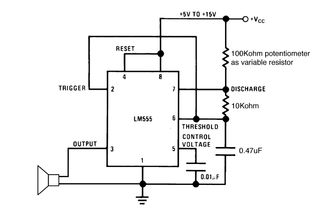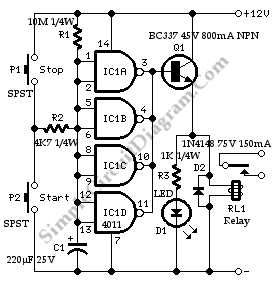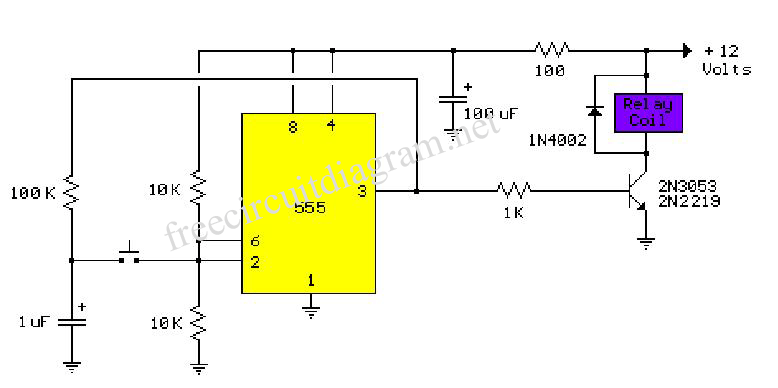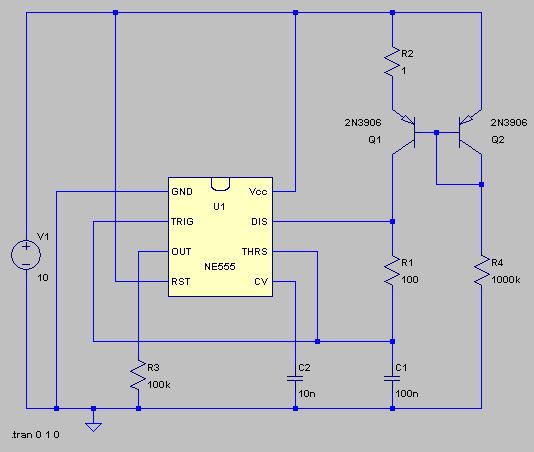
60 seconds timer with LEDs
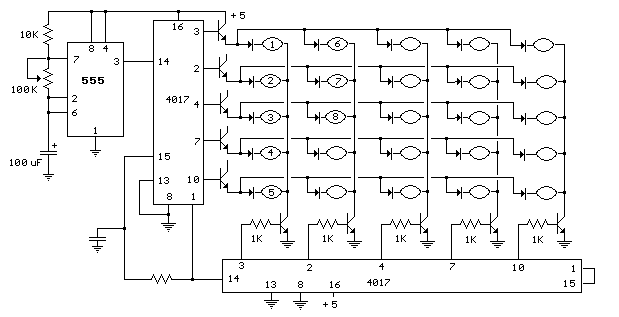
The circuit is a 0-60 second timer using timer 555 and two 4017 for LED driving.
The described circuit employs a 555 timer IC configured in monostable mode to create a timing interval ranging from 0 to 60 seconds. The output of the 555 timer triggers a sequence of events that drives two CD4017 decade counter ICs, which are utilized for LED driving.
In this configuration, the 555 timer is connected to a resistor-capacitor (RC) network that determines the timing duration. The timing period (T) can be calculated using the formula T = 1.1 * R * C, where R is the resistance in ohms and C is the capacitance in farads. By selecting appropriate values for R and C, the desired timing range can be achieved. For instance, a resistor of 1 MΩ and a capacitor of 100 µF would yield a timing interval close to 60 seconds.
Upon triggering the 555 timer, the output goes high for the duration of the timing period. This output is then fed into the clock input of the first CD4017 IC. The CD4017 is a decade counter that counts from 0 to 9, activating its output pins sequentially as it counts. Each output pin corresponds to a specific LED, allowing for visual indication of the count.
The first CD4017 can be configured to drive ten LEDs, while the second CD4017 can be cascaded to extend the counting capability. The carry-out pin of the first CD4017 can be connected to the clock input of the second CD4017, enabling it to count further once the first reaches its maximum count. This arrangement allows for a total of 20 LEDs to be driven, with each LED illuminating in sequence as the timer counts down.
Power supply considerations for the circuit include ensuring that the 555 timer and the CD4017 ICs are supplied with appropriate voltage levels, typically between 3V to 15V, depending on the specifications of the components used. Additionally, bypass capacitors should be placed near the power pins of the ICs to filter any noise and ensure stable operation.
In summary, the circuit effectively combines a 555 timer for timing control and CD4017 decade counters for sequential LED activation, providing a visual countdown timer that can be utilized in various applications, such as educational projects, displays, or timing indicators.The circuit is a 0-60 second timer using timer 555 and two 4017 for LED driving. 🔗 External reference
The described circuit employs a 555 timer IC configured in monostable mode to create a timing interval ranging from 0 to 60 seconds. The output of the 555 timer triggers a sequence of events that drives two CD4017 decade counter ICs, which are utilized for LED driving.
In this configuration, the 555 timer is connected to a resistor-capacitor (RC) network that determines the timing duration. The timing period (T) can be calculated using the formula T = 1.1 * R * C, where R is the resistance in ohms and C is the capacitance in farads. By selecting appropriate values for R and C, the desired timing range can be achieved. For instance, a resistor of 1 MΩ and a capacitor of 100 µF would yield a timing interval close to 60 seconds.
Upon triggering the 555 timer, the output goes high for the duration of the timing period. This output is then fed into the clock input of the first CD4017 IC. The CD4017 is a decade counter that counts from 0 to 9, activating its output pins sequentially as it counts. Each output pin corresponds to a specific LED, allowing for visual indication of the count.
The first CD4017 can be configured to drive ten LEDs, while the second CD4017 can be cascaded to extend the counting capability. The carry-out pin of the first CD4017 can be connected to the clock input of the second CD4017, enabling it to count further once the first reaches its maximum count. This arrangement allows for a total of 20 LEDs to be driven, with each LED illuminating in sequence as the timer counts down.
Power supply considerations for the circuit include ensuring that the 555 timer and the CD4017 ICs are supplied with appropriate voltage levels, typically between 3V to 15V, depending on the specifications of the components used. Additionally, bypass capacitors should be placed near the power pins of the ICs to filter any noise and ensure stable operation.
In summary, the circuit effectively combines a 555 timer for timing control and CD4017 decade counters for sequential LED activation, providing a visual countdown timer that can be utilized in various applications, such as educational projects, displays, or timing indicators.The circuit is a 0-60 second timer using timer 555 and two 4017 for LED driving. 🔗 External reference
